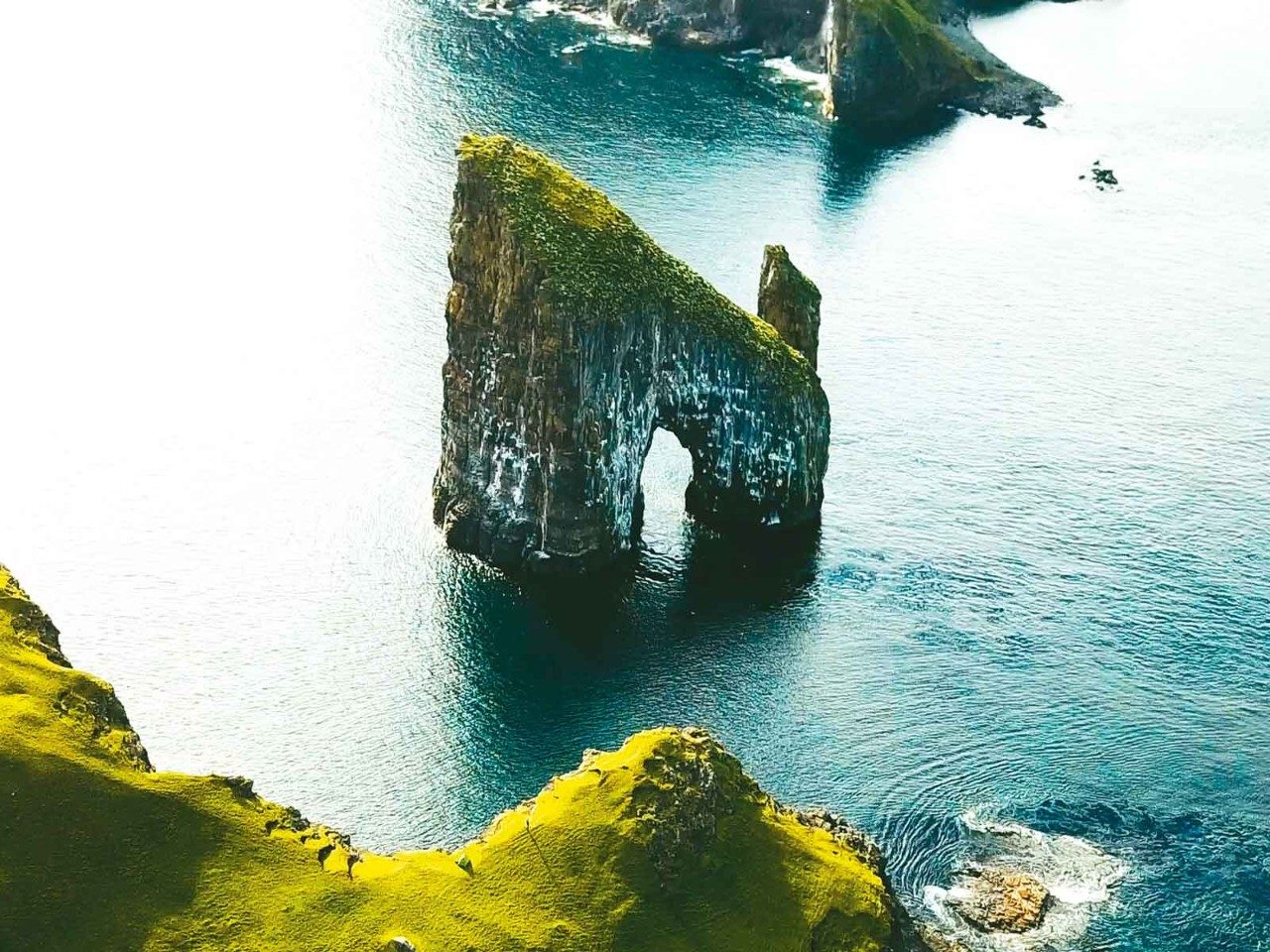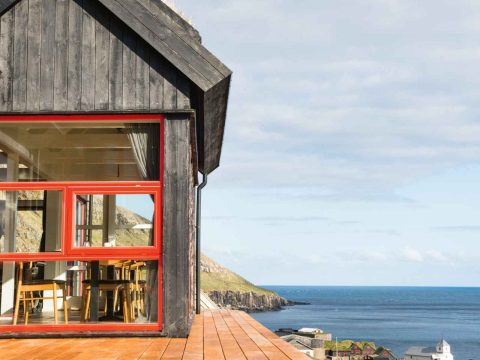Looking for Adventure? Try The Faroe Islands

Oh, the adjectives! Grand, wild, imposing, primordial, majestic. Yes, the Faroe Islands, a cluster of 18 spectacular isles stranded in the North Atlantic, offers a sense of drama that fills travellers with awe.
Created by volcanic eruptions some 55 million years ago, the islands feature glaciated slopes, soaring cliff faces, sweeping valleys and rugged mountains. There’s a pleasing juxtaposition of arresting topography and bucolic simplicity; charming villages of multicoloured cottages and grass-roofed homes nestle into lush emerald valleys, while razor-sharp cliffs and towering basalt sea stacks overlook deep fjords and a mercurial ocean.
It’s not surprising that these islands draw comparisons to neighbouring Iceland. The archipelago might be about one-seventieth the size but the striking scenery and abundant wildlife, particularly seabirds and marine life, is on par. In summer, there’s a delightful 19 hours of sunlight a day. And the tiny capital of Tórshavn has a cosmopolitan air, a rich cultural history and a burgeoning food scene.

The big difference between the two is the numbers. In the Faroe Islands there are 50,000 locals and the tourism body (visitfaroeislands.com) estimates that the isles welcome about 100,000 visitors a year. Compare that to Iceland, which was inundated with 1.8 million visitors in 2016. If you want northern exposure without the crowds, the Faroe Islands are for you.
Most of the focus is on outdoor activities such as hiking, horseriding, cycling, kayaking, sailing and fishing. More extreme adventurers can try rock climbing, rappelling and cliff jumping . A ferry trip to the westernmost isle of Mykines is a must to see the thousands of puffins, gannets and other flyers that nest there, as is a boat tour to the dizzying bird cliffs at Vestmanna on Streymoy.
On Vágar, take the old postman’s path from Bøur to Gásadalur to see the Múlafossur waterfall. (Before a tunnel was built, this was the only way to reach Gásadalur.) In Gjógv, on Eysturoy, stay at Gjáargarður guesthouse, leaving time to scale the archipelago’s highest peak, Slættaratindur. Speaking of mountains, six of the 10 highest are on the island of Kunoy, which is sometimes overlooked by visitors but worth the trip.
Explore the capital, Tórshavn, too, taking in the National Gallery; The Nordic House, which hosts exhibitions and concerts; Tinganes, thought to be one of the oldest parliamentary meeting places in the world; and designer boutiques Guðrun & Guðrun, Steinprent and Öström (Skálatrøð 18).
Enjoy Faroese cuisine at newly Michelin-starred Koks (below), along with Barbara Fish House, Ræst and the islands’ sole vegetarian eatery, Smakka. Hotel Føroyar is the top pick as a base, although new boutique stay Hotel Havgrím, opening this month, is highly anticipated.

Pack decent hiking boots and plenty of layers. It may be temperate, given the location (summer temperatures average around 12°C; winter, about 3°C), but the weather can be highly unpredictable. Having said that, it’s the special play between weather and setting – moody clouds, bright pops of sunlight, the saturated hues of the grass and ocean, the dramatic terrain – that makes this such a splendid landscape.
SEE ALSO: First-timer’s Guide to Reykjavik


